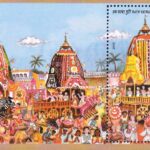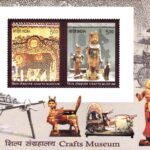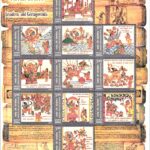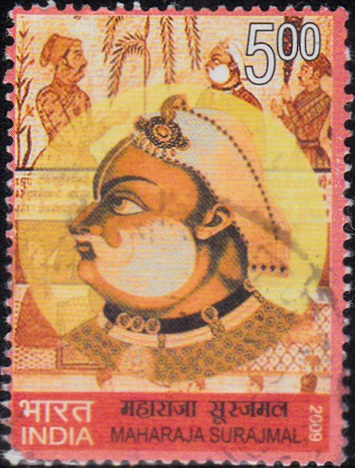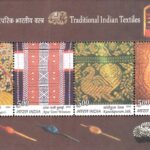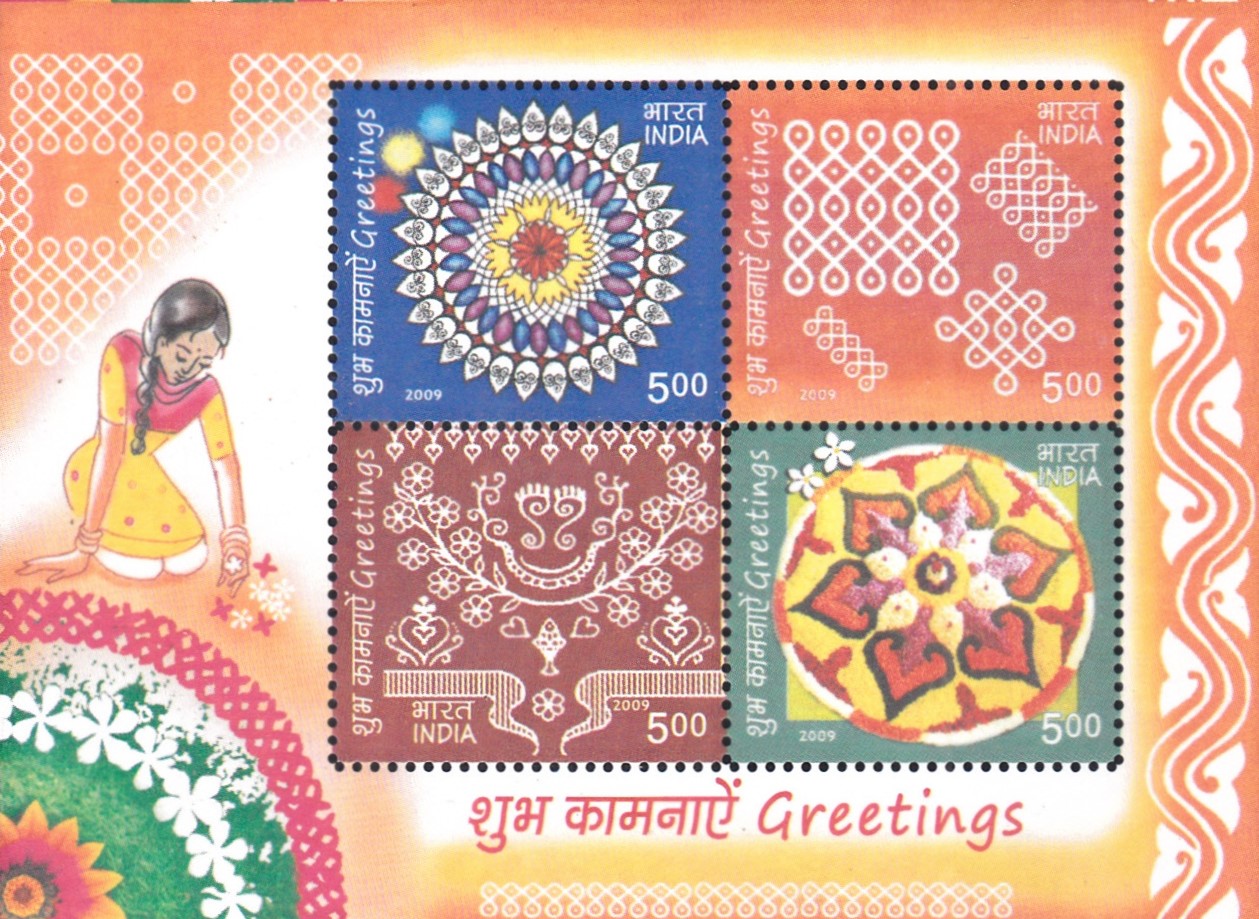
India Greetings 2009
A Miniature Sheet consisting of 4 nos of special postage stamps on Folk Art for Greetings :
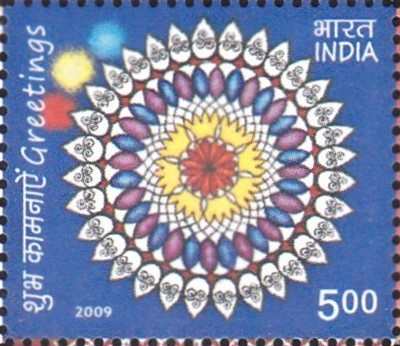
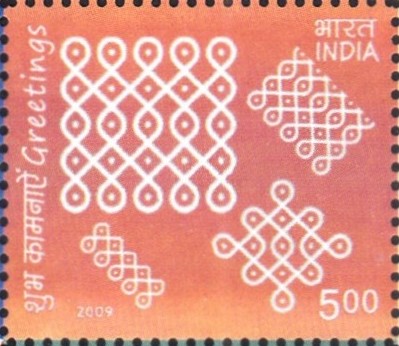
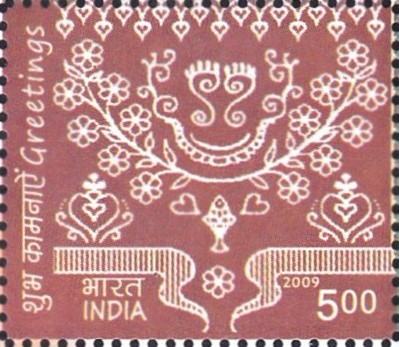
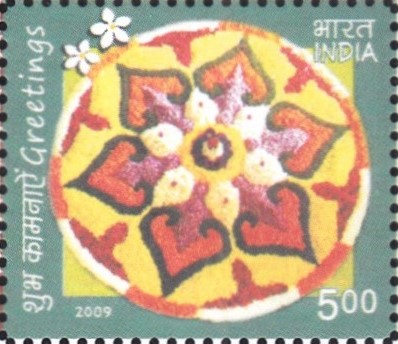

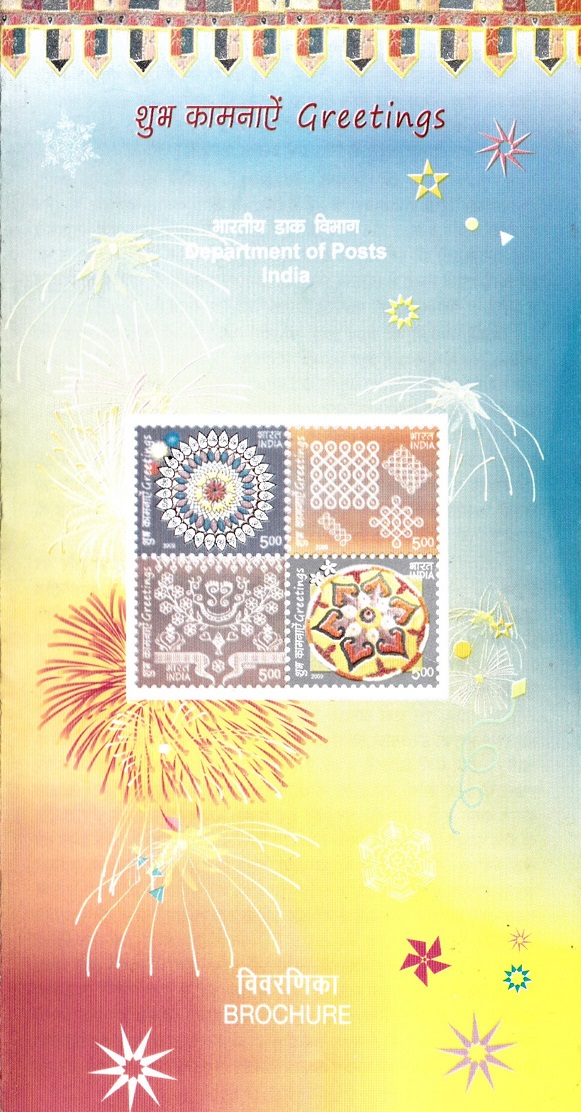 Issued by India
Issued by India
Issued on Dec 1, 2009
Issued for : India Post ushers in the festive season by issuing special postage stamps on this folk art for Greetings.
Credits :
Stamp & FDC : Sankha Samantha
Cancellation : Alka Sharma
Type : Miniature Sheet, Mint Condition
Colour : Multi colour
Denomination : 500 Paise each
Stamps Printed : 0.8 Million
Miniature sheets : 0.4 Million
Printing Process : Wet–Offset
Printer : India Security Press, Nasik
About :
- Indian folk art which includes wall painting as well as floor painting goes back 5000 years. Kolam, Rangoli etc. are examples of floor art. They are intended to welcome guests and visitors to the home.
- The term Rangoli is derived from Rang (colour) + avalli (coloured creepers) or Rang + aavalli (row of colours). Rangoli originated in Maharashtra although today it is practised everywhere. Rangoli of Western India (Maharastra, Gujarat & Rajasthan) has a special characteristic colour-fills in contrast to the floor. In Eastern India (Bengal, Orissa) they decorate floors with Alpana, a line drawing with rice powder or paste.
- Rangoli was done in small patterns of 2’x2′ earlier, but now entire floor areas are covered in intricate detailed designs. The motifs in Rangoli are usually taken from nature peacocks, swans, mango, flowers, creepers, etc. The colours traditionally were derived from natural dyes from bark of trees, leaves, indigo, mud, rice etc. However, today synthetic dyes are used in a range of bright colours. The materials used for Rangoli create either a flat appearance, when coloured powder such as rice, brick, chilly, turmeric, etc. is used or a 3-D effect, when coriander seeds, cereals, pulses, etc. either in their natural colouring or tinted with natural dyes are used.
- Kolam, which is predominantly used in South India – Tamil Nadu, Karnataka and Andhra Pradesh – consists of patterns which are symmetrical and geometric in shape, drawn with continuous lines that may be straight or wavy and rounded on the edges. With local variations, they are essentially the same. They are generally drawn with dry rice powder or with rice paste whose white colour provides a sharp contrast to the base against which it is used. Also, it serves to feed ants, to show one must take care of other forms of life too, to create a natural balance. The dry, coarsely ground rice powder is placed between the thumb and forefinger and rubbed together and moved along a predetermined design by the creator. This is an art taught to girls from a young age and is difficult to master. Early morning and evening every day, the women of the house can be seen washing the threshold of their houses and drawing Kolams, free hand! On festive occasions, large designs, depicting the occasion are drawn in front of the entrance to the house, and smaller ones inside the house. These are then outlined in red with ‘kavi‘, a red brick paste, to make it look grand and more beautiful. One particular Kolam is the Sun in his Chariot drawn by 8-16 white horses! This is drawn on Pongal or Sankranthi Day – 14th-15th January, to depict the apparent move of the Sun from the Tropic of Capricorn northwards to the Tropic of Cancer.
- In the deep South and South West of India is Kerala, where flowers are used to create floor art. This is particularly done on Onam day (an important harvest festival in Kerala) and during the whole Onam week, when designs are changed every day. The designs would start in a small way but as the days go by, more and more artists join in and the designs get bigger and more beautiful. The most popular flowers are indigenous to the area : marigolds, chrysanthemums, daisies, roses, jasmines, besides leaves. A special flower, the THUMPA flower, a small light coloured flower in the shape of a heel and sole of a foot, nicknamed the Vishnu foot, is essential and is used in all flower Kolams during ONAM.
- There are Kolams which are called Yantras. Yantra means an instrument in Sanskrit and these Yantras are energy designs. Such Kolams are drawn around the sacred fire pit during religious ceremonies. One of the most popular Yantras are those drawn to depict and worship the nine planets (Nava Graha Kolams). These are drawn on different days of the week. There are several other very powerful Yantras associated with various deities. Again, these have very accurately drawn geometric designs-triangles, circles, multi-petalled lotus, etc. in beautiful colours.
- In folk art, the mistakes become embellishments and make the art work individual and unique. Each design is a personal experience of its creator. The final effect will be very typical of the designer – a firm hand, a shaky one, a trembling one – can make all the difference to folk art.
- Text : Based on the material available in the internet.
Subscribe
Login
0 Comments


